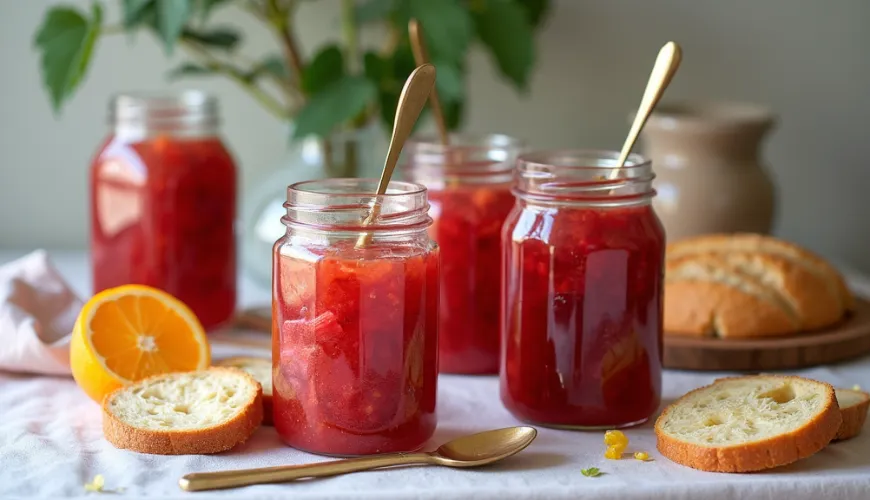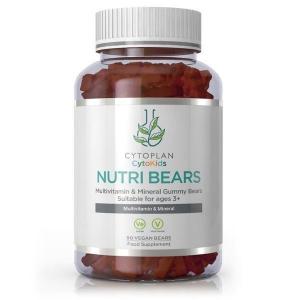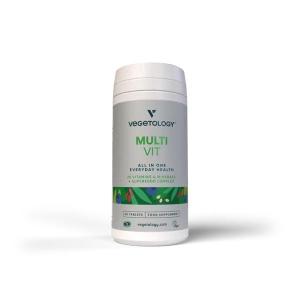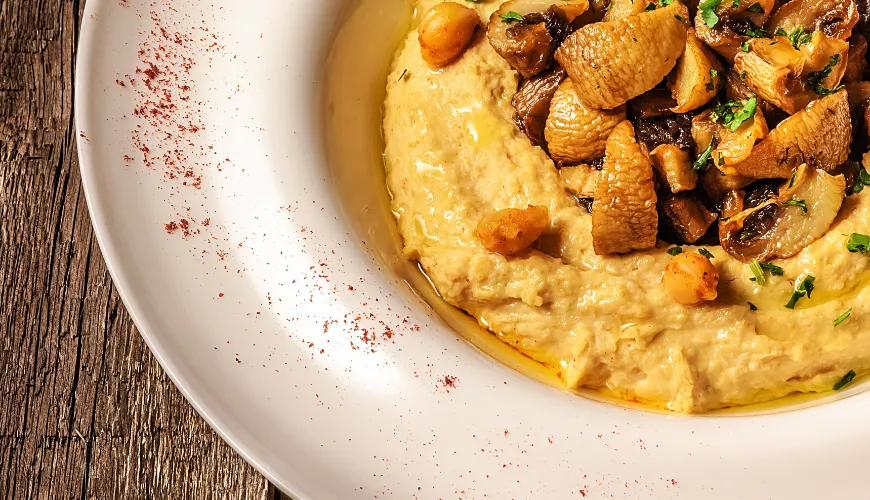
Discover the Magic of Rhubarb Jam and Inspired Recipes

Rhubarb Jam - The Forgotten Treasure of Our Gardens
When spring transitions into summer and the sun starts to warm our backs more persistently, a plant with striking pink-green stalks appears in gardens and markets - rhubarb. Its tart flavor divides sweet lovers into two camps - they either adore it or avoid it entirely. However, when rhubarb is properly processed, it can create a true culinary delight. One of the best ways to preserve it for later is undoubtedly rhubarb jam.
Although rhubarb is often underestimated in our region, in many countries it is a traditional ingredient for homemade jams and syrups. Its advantages are not only its taste but also its easy cultivation and excellent nutritional profile - it contains fiber, calcium, and vitamin K, for instance. And what can be better than opening a jar of homemade jam in winter, reminding yourself of spring days while knowing exactly what's inside?
Try our natural products
The Secret of Taste - Combining Rhubarb with Fruit and Spices
The foundation of any good recipe is fresh rhubarb, ideally harvested in May and June. As summer progresses, the oxalate content in the stalks begins to rise, so it's best to process it as soon as possible. Rhubarb alone has a sharp, tart taste, which, when combined correctly with other ingredients, can achieve a smooth and harmonious flavor.
One of the most popular combinations is rhubarb and strawberry jam. The sweetness of strawberries beautifully balances the acidity of rhubarb, resulting in a flavor concert that delights even those who otherwise don't fancy rhubarb. This recipe is beloved not only for its taste but also for its beautiful pink-red color that is visually appealing.
Another interesting variation is rhubarb and ginger jam. Ginger adds a mildly spicy note to the jam, which warms you up in the colder months and aids digestion. This recipe is often recommended as an accompaniment to cheeses or buttered bread - the combination of sweet, sour, and spicy creates a unique taste experience.
Experienced homemakers often experiment with the addition of orange peel, vanilla, or apples. The result is a range of rhubarb jam recipes that vary not only in taste but also in texture and aroma. Jam doesn’t have to be bland or monotonous - on the contrary, it can be different every time, yet always delicious.
Rhubarb Jam - Traditional Recipe, Modern Approach
The basic rhubarb jam recipe is simple and can be handled even by beginners. You only need a few basic ingredients: cleaned and chopped rhubarb, sugar, and lemon juice. The sugar ratio typically ranges from 1:1 to 2:1 in favor of rhubarb, depending on how sweet you want the jam. Lemon juice not only adds flavor - it also increases shelf life and helps with gelling due to its pectin content.
Many people today are trying to reduce added sugar, which is why there are also recipes for sugar-free rhubarb jam or with sugar substitutes like agave syrup, honey, or xylitol. With these variations, it's important to pay attention to the right consistency, as jam without sugar is harder to thicken and spoils more quickly. Adding apples or commercial pectin can help.
For example: one family from South Bohemia, growing rhubarb for the third generation, swears by an old family recipe. They add a handful of fresh strawberries and a piece of cinnamon to the classic rhubarb mix. The result? Jam that disappears before it even cools down. "We put it on bread, in yogurt, and the kids love it in pancakes," says Mrs. Alena, who is passing the recipe down to her grandchildren.
Tips for a Perfect Result
To ensure the jam turns out really well, it's worth following a few principles. Rhubarb should be thoroughly washed and stripped of leaves - they are poisonous and shouldn't be included in any dish. The stalks should be cut into uniform pieces to cook evenly. Some people briefly blanch rhubarb before cooking to reduce its acidity, but that depends on personal preference.
During cooking, it's important to monitor the consistency. The jam should only bubble lightly to avoid burning. A classic trick to test if the jam is done is to drop a bit on a cold plate - if it doesn't run, it's ready. Then, pour it hot into sterilized jars, turn them upside down, and let cool. Stored in a cool, dark place, it can last for several months.
If you're tempted to experiment, try some of these variations:
- Rhubarb + strawberries + mint - a fresh version suitable for desserts
- Rhubarb + ginger + orange peel - ideal for cheeses or toasts
- Rhubarb + apples + vanilla - a gentle and delicious combination for children
Each of these versions gives the jam a new dimension and allows you to use available ingredients according to the season.
Sustainability by the Spoonful - Why Homemade Jam Makes Sense
At a time when more and more people are considering what they eat and the impact of their diet on the planet, making homemade jam is a beautiful example of a sustainable and healthy approach. Instead of a plastic store-bought container, you reuse an old jar, and instead of chemical preservatives, you use just lemon and heat. Moreover, by buying rhubarb from a local farmer or growing it in your own garden, you support the local economy and reduce your carbon footprint.
Lastly, you can prepare such a jam exactly to your taste and needs - less sugar, more fruit, no artificial additives. Additionally, homemade jam is a beautiful and personal gift that delights everyone - whether you bring a small jar to a neighbor or a package to friends when visiting.
As British food stylist Nigella Lawson once said: "Homemade jam is like sunshine in a jar." And rhubarb, whether on its own or combined with strawberries, ginger, or apples, is an ideal ingredient to capture that sunshine.
So why not take advantage of what nature offers and start making your own jam? You might be surprised at how sour rhubarb can be the sweet beginning of something beautiful.







